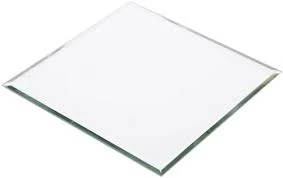

Fusing with Float Glass A Seamless Harmony of Art and Technique
Fusing with float glass is an innovative technique that merges artistry and craftsmanship, creating stunning visual compositions and functional pieces. This method exploits the unique properties of float glass—a type of glass produced by floating molten glass on top of molten tin, resulting in a smooth, even, and uniform thickness. The process of fusing with float glass offers artists and designers a versatile canvas, allowing them to explore various textures, colors, and patterns while pushing the boundaries of traditional glasswork.
Understanding Float Glass
Float glass has gained popularity in the glass industry due to its superior quality and clarity. The process where glass is floated on tin creates a surface that is free from distortions and impurities, making it ideal for artistic applications. Float glass is not only transparent but also provides a flat and smooth surface that enhances the depth of colors used in fusing. The clarity of the glass allows light to pass through beautifully, making fused glass items appear luminous and captivating.
The Fusing Process
Fusing glass involves subjecting pieces of glass to high temperatures, typically ranging from 1400°F to 1600°F (760°C to 870°C). During this process, the glass begins to soften and subsequently fuse together. When working with float glass, artists often use a variety of techniques to manipulate the glass's final appearance. They can layer different colors, incorporate textures, and even add inclusions like metals or organic materials to create unique designs. The fusing process can also involve slumping, where the fused glass is placed in a mold to achieve specific shapes, further expanding the artist’s creative potential.
Applications of Fused Float Glass

The applications for fused float glass are vast and varied. In the realm of interior design, fused glass can be used as decorative panels, lighting fixtures, or even as a unique alternative to traditional mirrors. These pieces not only serve as functional items but also as vibrant art statements that can transform a space. The durability of float glass makes it suitable for outdoor installations as well, enabling artists to create sculptures or installations that can withstand the elements while retaining their beauty.
Furthermore, fused glass is gaining traction in commercial settings. Businesses are incorporating fused glass artwork into their interiors as a means to enhance aesthetics and brand identity. From eye-catching signage to elegant façade elements, the versatility of fused float glass allows for creative solutions that can be tailored to specific business needs.
Environmental Considerations
In an age where sustainability is paramount, the glass industry is responding to the challenge by focusing on eco-friendly practices. Float glass, being fully recyclable, allows artists to work with recycled materials, thereby minimizing waste. By fusing discarded or surplus glass, artisans can engage in environmentally responsible practices while creating beautiful pieces. This fusion of art and sustainability is not only beneficial for the planet but also resonates with consumers who appreciate eco-conscious practices in the products they choose to support.
Conclusion The Future of Fusing with Float Glass
As the field of glass art continues to evolve, fusing with float glass remains at the forefront of innovation. The technique invites artists and designers to experiment and redefine the boundaries of traditional glasswork. With endless possibilities for creativity and the incorporation of sustainable practices, the future of fused float glass holds enormous potential. Whether it’s transforming a mundane space into a mesmerizing environment or creating functional art, fusing with float glass continues to inspire and captivate, resonating with audiences who appreciate the interplay of light, color, and form.
In conclusion, the art of fusing with float glass offers a rich tapestry of creative expression, impressing both artists and audiences alike. Its versatility and beauty make it a vital part of contemporary glass art, ensuring its significance in the future of design and artistry.